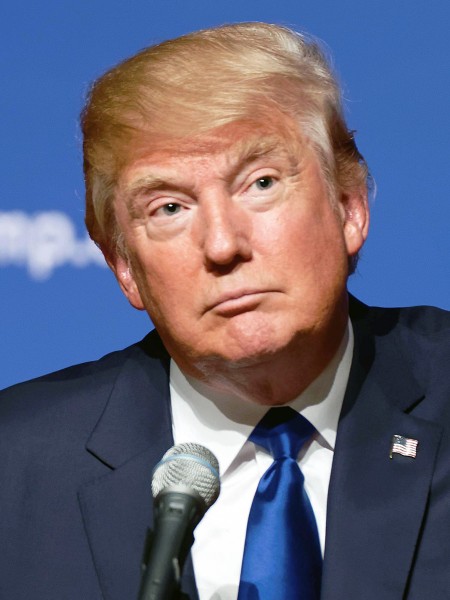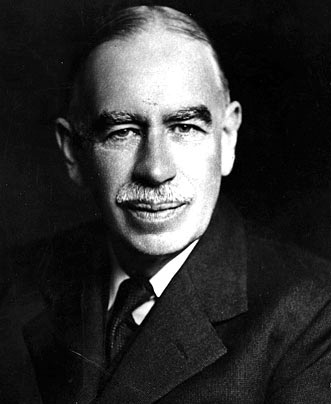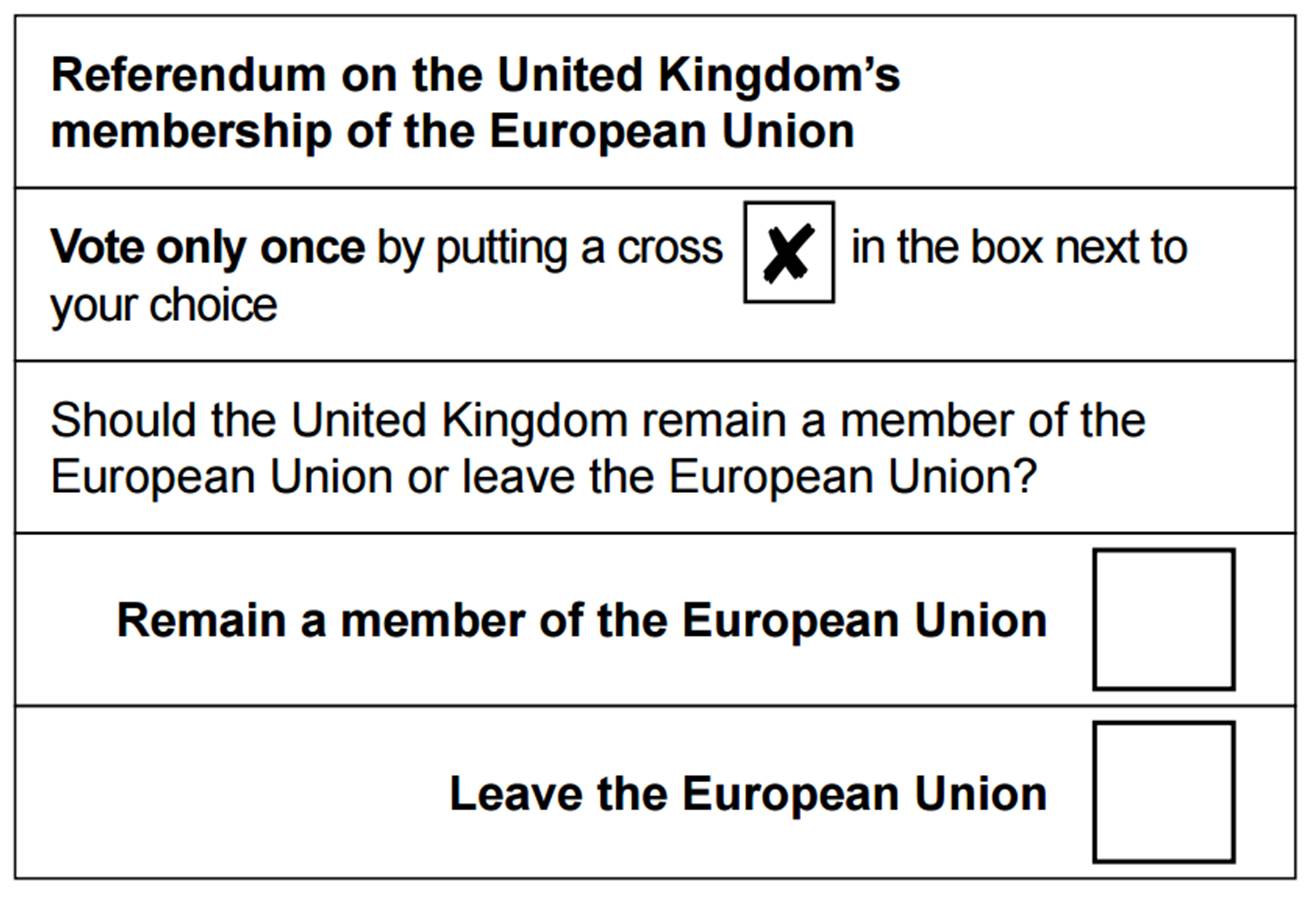 Some commentators have seen the victory of Donald Trump and, prior to that, the Brexit vote as symptoms of a crisis in capitalism. Much of the campaigning in the US election, both by Donald Trump on the right and Bernie Sanders on the left focused on the plight of the poor. Whether the blame was put on immigration, big government, international organisations, the banks, cheap imports undercutting jobs or a lack of social protection, the message was clear: capitalism is failing to improve the lot of the majority. A small elite is getting significantly richer while the majority sees little or no gain in their living standards and a rise in uncertainty.
Some commentators have seen the victory of Donald Trump and, prior to that, the Brexit vote as symptoms of a crisis in capitalism. Much of the campaigning in the US election, both by Donald Trump on the right and Bernie Sanders on the left focused on the plight of the poor. Whether the blame was put on immigration, big government, international organisations, the banks, cheap imports undercutting jobs or a lack of social protection, the message was clear: capitalism is failing to improve the lot of the majority. A small elite is getting significantly richer while the majority sees little or no gain in their living standards and a rise in uncertainty.
The articles below look at this crisis. They examine the causes, which they agree go back many years as capitalism has evolved. The financial crash of 2008 and the slow recovery since are symptomatic of the underlying changes in capitalism.
The Friedman article focuses on the slowing growth in technological advance and the problem of aging populations. What technological progress there is is not raising incomes generally, but is benefiting a few entrepreneurs and financiers. General rises in income may eventually come, but it may take decades before robotics, biotechnological advances, e-commerce and other breakthrough technologies filter through to higher incomes for everyone. In the meantime, increased competition through globalisation is depressing the incomes of the poor and economically immobile.
 All the articles look at the rise of the rich. The difference with the past is that the people who are gaining the most are not doing so from production but from financial dealing or rental income; they have gained while the real economy has stagnated.
All the articles look at the rise of the rich. The difference with the past is that the people who are gaining the most are not doing so from production but from financial dealing or rental income; they have gained while the real economy has stagnated.
The gains to the rich have come from the rise in the value of assets, such as equities (shares) and property, and from the growth in rental incomes. Only a small fraction of finance is used to fund business investment; the majority is used for lending against existing assets, which then inflates their prices and makes their owners richer. In other words, the capitalist system is moving from driving growth in production to driving the inflation of asset prices and rental incomes.
The process whereby financial markets grow and in turn drive up asset prices is known as ‘financialisation’. Not only is the process moving away from funding productive investment and towards speculative activity, it is leading to a growth in ‘short-termism’. The rewards of senior managers often depend on the price of their companies’ shares. This leads to a focus on short-term profit and a neglect of long-term growth and profitability – to a neglect of investment in R&D and physical capital.
The process of financialisation has been driven by deregulation, financial innovation, the growth in international financial flows and, more recently, by quantitative easing and low interest rates. It has led to a growth in private debt which, in turn, creates more financial instability. The finance industry has become so profitable that even manufacturing companies are moving into the business of finance themselves – often finding it more profitable than their core business. As the Foroohar article states, “the biggest unexplored reason for long-term slower growth is that the financial system has stopped serving the real economy and now serves mainly itself.”
 So will the election of Donald Trump, and pressure from populism in other countries too, mean that governments will focus more on production, job creation and poverty reduction? Will there be a movement towards fiscal policy to drive infrastructure spending? Will there be a reining in of loose monetary policy and easy credit?
So will the election of Donald Trump, and pressure from populism in other countries too, mean that governments will focus more on production, job creation and poverty reduction? Will there be a movement towards fiscal policy to drive infrastructure spending? Will there be a reining in of loose monetary policy and easy credit?
Or will addressing the problem of financialisation and the crisis of capitalism result in the rich continuing to get richer at the expense of the poor, but this time through more conventional channels, such as increased production and monopoly profits and tax cuts for the rich? Trump supporters from among the poor hope the answer is no. Those who supported Bernie Sanders in the Democratic primaries think the answer will be yes and that the solution to over financialisation requires more, not less, regulation, a rise in minimum wages and fiscal policies aimed specifically at the poor.
Articles
Can Global Capitalism Be Saved? Project Syndicate, Alexander Friedman (11/11/16)
American Capitalism’s Great Crisis Time, Rana Foroohar (12/5/16)
The Corruption of Capitalism by Guy Standing review – work matters less than what you own The Guardian, Katrina Forrester (26/10/16)
Questions
- Do you agree that capitalism is in crisis? Explain.
- What is meant by financialisation? Why has it grown?
- Will the policies espoused by Donald Trump help to address the problems caused by financialisation?
- What alternative policies are there to those of Trump for addressing the crisis of capitalism?
- Explain Schumpeter’s analysis of creative destruction.
- What technological innovations that are currently taking place could eventually benefit the poor as well as the rich?
- What disincentives are there for companies investing in R&D and new equipment?
- What are the arguments for and against a substantial rise in the minimum wage?
 The article below looks at the economy of Brazil. The statistics do not look good. Real output fell last year by 3.8% and this year it is expected to fall by another 3.3%. Inflation this year is expected to be 9.0% and unemployment 11.2%, with the government deficit expected to be 10.4% of GDP.
The article below looks at the economy of Brazil. The statistics do not look good. Real output fell last year by 3.8% and this year it is expected to fall by another 3.3%. Inflation this year is expected to be 9.0% and unemployment 11.2%, with the government deficit expected to be 10.4% of GDP.
The article considers Keynesian economics in the light of the case of Brazil, which is suffering from declining potential supply, but excess demand. It compares Brazil with the case of most developed countries in the aftermath of the financial crisis. Here countries have suffered from a lack of demand, made worse by austerity policies, and only helped by expansionary monetary policy. But the effect of the monetary policy has generally been weak, as much of the extra money has been  used to purchase assets rather than funding a growth in aggregate demand.
used to purchase assets rather than funding a growth in aggregate demand.
Different policy prescriptions are proposed in the article. For developed countries struggling to grow, the solution would seem to be expansionary fiscal policy, made easy to fund by lower interest rates. For Brazil, by contrast, the solution proposed is one of austerity. Fiscal policy should be tightened. As the article states:
Spending restraint might well prove painful for some members of Brazilian society. But hyperinflation and default are hardly a walk in the park for those struggling to get by. Generally speaking, austerity has been a misguided policy approach in recent years. But Brazil is a special case. For now, anyway.
The tight fiscal policies could be accompanied by supply-side policies aimed at reducing bureaucracy and inefficiency.
Article
Brazil and the new old normal: There is more than one kind of economic mess to be in The Economist, Free Exchange Economics (12/10/16)
Questions
- Explain what is meant by ‘crowding out’.
- What is meant by the ‘liquidity trap’? Why are many countries in the developed world currently in a liquidity trap?
- Why have central banks in the developed world found it difficult to stimulate growth with policies of quantitative easing?
- Under what circumstances would austerity policies be valuable in the developed world?
- Why is crowding out of fiscal policy unlikely to occur to any great extent in Europe, but is highly likely to occur in Brazil?
- What has happened to potential GDP in Brazil in the past couple of years?
- What is meant by the ‘terms of trade’? Why have Brazil’s terms of trade deteriorated?
- What sort of policies could the Brazilian government pursue to raise growth rates? Are these demand-side or supply-side policies?
- Should Brazil pursue austerity policies and, if so, what form should they take?
 Before the referendum, economists overwhelmingly argued that the economic case for the UK remaining in the EU was much stronger than that for leaving. They warned of serious economic consequences, both short term and long term, of a Brexit vote. And yet, by a majority of 51.9% to 48.1% of the 72.1% of the electorate who voted, the UK voted to leave the EU.
Before the referendum, economists overwhelmingly argued that the economic case for the UK remaining in the EU was much stronger than that for leaving. They warned of serious economic consequences, both short term and long term, of a Brexit vote. And yet, by a majority of 51.9% to 48.1% of the 72.1% of the electorate who voted, the UK voted to leave the EU.
Does this mean that economists failed to communicate to the electorate? Were the arguments presented poorly or in too academic a way?
Or did people simply not believe the economists’ forecasts, being cynical about the ability of economists to forecast? During the campaign, on several occasions I heard people repeating the joke that economists had successfully predicted five out of the last two recessions!
 Did they not believe the data that immigrants from other EU countries to the UK contribute more in taxes they draw in benefits and that overall they make a net positive contribution to output per head? Or perhaps they believed the claims that immigrants imposed a net cost on the economy.
Did they not believe the data that immigrants from other EU countries to the UK contribute more in taxes they draw in benefits and that overall they make a net positive contribution to output per head? Or perhaps they believed the claims that immigrants imposed a net cost on the economy.
Or were there ‘non-economic’ issues that people found more persuasive, such as questions of sovereignty or national identity? Or was the strain on local resources, such as health services, schools and housing, blamed on immigration itself rather than on a lack of spending on additional resources – the funding for which could have come from the extra GDP generated by the immigration?
Or were there so many lies told by politicians and those with vested interests that people simply didn’t know whom to believe?
Economists will, no doubt, do a lot of soul searching over the coming months. One such economist is Paul Johnson, Director of the Institute for Fiscal Studies, whose article is linked below.
Article
We economists must face the plain truth that the referendum showed our failings Institute for Fiscal Studies newspaper articles. Paul Johnson (28/6/16)
Questions
- In what ways could economists have communicated better to the general public during the referendum campaign?
- For what reasons may people distrust economists?
- Were economists hampered in delivering their message by ‘balanced reporting’?
- Comment on Paul Johnson’s statement that, ‘The most politically engaged of us spend decades working out how to tweak tax policy, or labour market policy, or competition policy to deliver small benefits. How many times over would our work have been repaid if we had simply convinced a few more people of the basics?’
- Do economists, or at least some of them, need to become more ‘media savvy’?
- How could institutions, such as the Royal Economic Society and the Society of Business Economists, do more to help economists collectively to communicate with the general public?
- Give some examples of the terminology/jargon we use which might be inappropriate for communicating with the general public. Suggest some alternative terms to the examples you’ve given.
 Project Syndicate is an organisation which produces articles on a range of economic, political and social topics written by eminent scholars, political and business leaders, policymakers and civic activists. It then makes these available to news media in more than 150 countries. Here we look at four such articles which assess the outlook for the European and global economies and even that of capitalism itself.
Project Syndicate is an organisation which produces articles on a range of economic, political and social topics written by eminent scholars, political and business leaders, policymakers and civic activists. It then makes these available to news media in more than 150 countries. Here we look at four such articles which assess the outlook for the European and global economies and even that of capitalism itself.
The general tone is one of pessimism. Despite unconventional monetary policies, such as quantitative easing (QE) and negative nominal interest rates, the global recovery is anaemic. As the Nouriel Roubini articles states:
Unconventional monetary policies – entrenched now for almost a decade – have themselves become conventional. And, in view of persistent lacklustre growth and deflation risk in most advanced economies, monetary policymakers will have to continue their lonely fight with a new set of ‘unconventional unconventional’ monetary policies.
Perhaps this will involve supplying additional money directly to consumers and/or business in a so-called ‘helicopter drop’ of money. Perhaps it will be supplying money directly to governments to finance infrastructure projects – a policy dubbed ‘people’s quantitative easing‘. Perhaps it will involve taxing the holding of cash by banks to encourage them to lend.
 The Hans-Werner Sinn article looks at some of the consequences of the huge amount of money created through QE and continuing to be created in the eurozone. Although it has not boosted consumption and investment nearly as much as desired, it has caused bubbles in various asset markets. For example, the property market has soared in many countries:
The Hans-Werner Sinn article looks at some of the consequences of the huge amount of money created through QE and continuing to be created in the eurozone. Although it has not boosted consumption and investment nearly as much as desired, it has caused bubbles in various asset markets. For example, the property market has soared in many countries:
Property markets in Austria, Germany, and Luxembourg have practically exploded throughout the crisis, as a result of banks chasing borrowers with offers of loans at near-zero interest rates, regardless of their creditworthiness.
The German property boom could be reined in with an appropriate jump in interest rates. But, given the ECB’s apparent determination to head in the opposite direction, the bubble will only grow. If it bursts, the effects could be dire for the euro.
The Jean Pisani-Ferry article widens the analysis of the eurozone’s problems. Like Roubini, he considers the possibility of a helicopter drop of money, which “would be functionally equivalent to a direct government transfer to households, financed by central banks’ permanent issuance of money”.
 Without such drastic measures he sees consumer and business pessimism (see chart) undermining recovery and making the eurozone vulnerable to global shocks, such as further weakening in China. (Click here for a PowerPoint of the chart.)
Without such drastic measures he sees consumer and business pessimism (see chart) undermining recovery and making the eurozone vulnerable to global shocks, such as further weakening in China. (Click here for a PowerPoint of the chart.)
Finally, Anatole Kaletsky takes a broad historical view. He starts by saying that “All over the world today, there is a sense of the end of an era, a deep foreboding about the disintegration of previously stable societies.” He argues that the era of ‘leaving things to the market’ is coming to an end. This was an era inspired by the monetarist and supply-side revolutions of the 1960s and 1970s that led to the privatisation and deregulation policies of Reagan, Thatcher and other world leaders.
But if the market cannot cope with the complexities of today’s world, neither can governments.
If the world is too complex and unpredictable for either markets or governments to achieve social objectives, then new systems of checks and balances must be designed so that political decision-making can constrain economic incentives and vice versa. If the world is characterized by ambiguity and unpredictability, then the economic theories of the pre-crisis period – rational expectations, efficient markets, and the neutrality of money – must be revised.
… It is obvious that new technology and the integration of billions of additional workers into global markets have created opportunities that should mean greater prosperity in the decades ahead than before the crisis. Yet ‘responsible’ politicians everywhere warn citizens about a ‘new normal’ of stagnant growth. No wonder voters are up in arms.
His solution has much in common with that of Roubini and Pisani-Ferry. “Money could be printed and distributed directly to citizens. Minimum wages could be raised to reduce inequality. Governments could invest much more in infrastructure and innovation at zero cost. Bank regulation could encourage lending, instead of restricting it.”
So will there be a new era of even more unconventional monetary policy and greater regulation that encourages rather than restricts investment? Read the articles and try answering the questions.
Articles
Unconventional Monetary Policy on Stilts Project Syndicate, Nouriel Roubini (1/4/16)
Europe’s Emerging Bubbles Project Syndicate, Hans-Werner Sinn (28/3/16)
Preparing for Europe’s Next Recession Project Syndicate, Jean Pisani-Ferry (31/3/16)
When Things Fall Apart Project Syndicate, Anatole Kaletsky (31/3/16)
Questions
- Explain how a ‘helicopter drop’ of money would work in practice.
- Why has growth in the eurozone been so anaemic since the recession of 2009/10?
- What is the relationship between tightening the regulations about capital and liquidity requirements of banks and bank lending?
- Explain the policies of the different eras identified by Anatole Kaletsky.
- Would it be fair to describe the proposals for more unconventional monetary policies as ‘Keynesian’?
- If quantitative easing was used to finance government infrastructure investment, what would be the effect on the public-sector deficit and debt?
- If the inflation of asset prices is a bubble, what could cause the bubble to burst and what would be the effect on the wider economy?
 As we saw in several posts on this site, last year was a tumultuous one for the Greek people and their economy. The economy was on the verge of bankruptcy; the Greek people rejected the terms of a bailout in a referendum; exit from the eurozone and having to return to the drachma seemed likely; banks were forced to closed at the height of the crisis; capital controls were imposed, with people restricted to drawing €60 a day or €420 a week – a policy still in force today; unemployment soared and many people suffered severe hardship.
As we saw in several posts on this site, last year was a tumultuous one for the Greek people and their economy. The economy was on the verge of bankruptcy; the Greek people rejected the terms of a bailout in a referendum; exit from the eurozone and having to return to the drachma seemed likely; banks were forced to closed at the height of the crisis; capital controls were imposed, with people restricted to drawing €60 a day or €420 a week – a policy still in force today; unemployment soared and many people suffered severe hardship.
To achieve the bailout, the Syriza government had to ignore the results of the referendum and agree to harsh austerity policies and sweeping market-orientated supply-side policies. This, at least, allowed Greece to stay in the eurozone. It held, and won, another election to seek a further mandate for these policies.
 But what are the prospects for 2016? Will it be a year of recovery and growth, with market forces working to increase productivity? Does 2016 mark the beginning of the end and, as prime minister Alexis Tsipras put it, “a final exit from economic crisis”?
But what are the prospects for 2016? Will it be a year of recovery and growth, with market forces working to increase productivity? Does 2016 mark the beginning of the end and, as prime minister Alexis Tsipras put it, “a final exit from economic crisis”?
Or will the continuing cuts simply push the economy deeper into recession, with further rises in unemployment and more and more cases of real human hardship? Is there a hysteresis effect here, with the past six years having created a demoralised and deskilled people, with cautious investors unable and/or unwilling to rebuild the economy?
 The article below looks at the rather gloomy prospects for Greece and at whether there are any encouraging signs. It also looks at the further demands of the troika of creditors – the IMF, the ECB and the European Commission’s European Stability Mechanism (ESM) – and at what the political and economic impact of these might be.
The article below looks at the rather gloomy prospects for Greece and at whether there are any encouraging signs. It also looks at the further demands of the troika of creditors – the IMF, the ECB and the European Commission’s European Stability Mechanism (ESM) – and at what the political and economic impact of these might be.
Greece’s economic crisis goes on, like an odyssey without end The Guardian, Helena Smith (4/1/16)
Questions
- Construct a timeline of Greece’s debt repayments, both past and scheduled, and of the bailouts given by the troika to prevent Greece defaulting.
- What supply-side reforms are being demanded by Greece’s creditors?
- What will be the effect of these supply-side reforms in (a) the short run; (b) the long run?
- Explain the meaning of hysteresis as it applies to an economy in the aftermath of a recession. How does the concept apply in the Greek situation?
- Discuss the alternative policy options open to the Greek government for tackling the persistent recession.
- Would it be better for Greece to leave the euro? Explain your arguments.
- “I cannot see how this government can survive the reforms. And I cannot see how it can avoid these reforms.” Is there any way out of this apparent impasse for the Greek government?
 Some commentators have seen the victory of Donald Trump and, prior to that, the Brexit vote as symptoms of a crisis in capitalism. Much of the campaigning in the US election, both by Donald Trump on the right and Bernie Sanders on the left focused on the plight of the poor. Whether the blame was put on immigration, big government, international organisations, the banks, cheap imports undercutting jobs or a lack of social protection, the message was clear: capitalism is failing to improve the lot of the majority. A small elite is getting significantly richer while the majority sees little or no gain in their living standards and a rise in uncertainty.
Some commentators have seen the victory of Donald Trump and, prior to that, the Brexit vote as symptoms of a crisis in capitalism. Much of the campaigning in the US election, both by Donald Trump on the right and Bernie Sanders on the left focused on the plight of the poor. Whether the blame was put on immigration, big government, international organisations, the banks, cheap imports undercutting jobs or a lack of social protection, the message was clear: capitalism is failing to improve the lot of the majority. A small elite is getting significantly richer while the majority sees little or no gain in their living standards and a rise in uncertainty. All the articles look at the rise of the rich. The difference with the past is that the people who are gaining the most are not doing so from production but from financial dealing or rental income; they have gained while the real economy has stagnated.
All the articles look at the rise of the rich. The difference with the past is that the people who are gaining the most are not doing so from production but from financial dealing or rental income; they have gained while the real economy has stagnated. So will the election of Donald Trump, and pressure from populism in other countries too, mean that governments will focus more on production, job creation and poverty reduction? Will there be a movement towards fiscal policy to drive infrastructure spending? Will there be a reining in of loose monetary policy and easy credit?
So will the election of Donald Trump, and pressure from populism in other countries too, mean that governments will focus more on production, job creation and poverty reduction? Will there be a movement towards fiscal policy to drive infrastructure spending? Will there be a reining in of loose monetary policy and easy credit?








